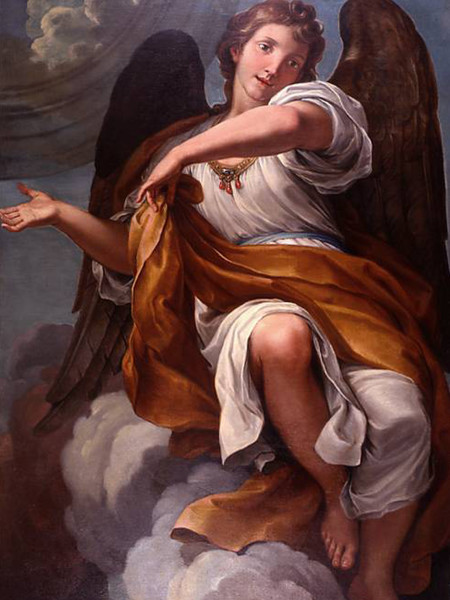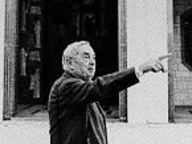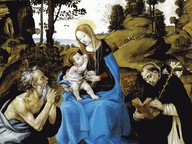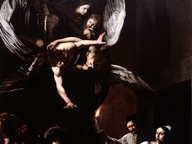From the Vatican to Caserta: Vanvitelli and his Angels

Dal Vaticano a Caserta: Vanvitelli e i suoi angeli, Caserta Palazzo Reale
From 03 Luglio 2013 to 04 Novembre 2013
Caserta
Place: Royal Palace of Caserta – Palatine Chapel
Address: Viale Douhet, 2/A
Times: Every day: 08.30 – 19.30. Closed on Thuesday
Organizers:
- Soprintendenza BAPSAE di Caserta e Benevento
Telefono per informazioni: +39 0823 448084
E-Mail info: caserta@civitamusea.it
Official site: http://www.reggiadicaserta.beniculturali.it
On July 3, at 11:30 am in the Palatine Chapel of the Royal Palace of Caserta, will inaugurate the exhibition "From the Vatican in Caserta: Vanvitelli and his angels", organized by the Superintendence BAPSAE of Caserta and Benevento directed by Paola Raffaella David in collaboration with the European Centre for Tourism and Culture chaired by Joseph Lepore and thanks to the considerable availability of the President of the Fabric of St. Peter's in the Vatican, Cardinal Angelo Comastri.
Will be exposed in Caserta two large paintings depicting the angels painted between 1742 and 1748 by James Zoboli, from Modena (1661-1767), as models of the mosaics of the Chapel of Santa Maria della Colonna, one of the seven chapels of the Basilica of San Peter. The angels will dialogue, in silence, with the angels in marble and stucco of the Palatine Chapel, one of the most extraordinary places in the Royal Palace, designed and realized, for the most part, in the second half of the eighteenth century, for Charles of Bourbon by Luigi Vanvitelli (1700-1773). Vanvitelli - who at the time of Zoboli was an architect of the Fabric of St. Peter's, and in his youth he was engaged as an author of models in the Vatican – tested on September 22, 1747, the work done by Zoboli for the Chapel of Santa Maria della Colonna . An extraordinary event, this show that, for the first time, correlates, through the figure of the great Vanvitelli, one of the most prestigious venues of dynastic power and the seat of the Catholic Church.
On this occasion will be exhibited numerous and precious vestments preserved in the Palace - chasubles and dalmatics supplied to the Palatine Chapel or probably from the royal residences of the area such as San Leucio and Carditello. It will be reopened to the public the Museum of Liturgical Furnishings attached to the Palatine Chapel and made viable the gallery on the first floor and the royal gallery. During the preparation of the exhibition there were two interesting findings. The first is a picture about work in the quarry of Castronovo in Sicily which provided a series of columns for the Palatine Chapel. The painting, unpublished, denotes a hand in the characters quite close to that of Antonio Joli. Found in severe degradation in one of the stores of the Palace, has restored by Laboratory of restoration of the Superintendent. In the same laboratory, was also deposited the head of a putto in white Carrara marble, found in the fire place of the Palace. The sculpture is like those present in the Chapel and may be it’s the head of one of the two original puttos of the Main Entrance, made by Gaetano Solomone, damaged during the bombardment of September 1943.
Will be exposed in Caserta two large paintings depicting the angels painted between 1742 and 1748 by James Zoboli, from Modena (1661-1767), as models of the mosaics of the Chapel of Santa Maria della Colonna, one of the seven chapels of the Basilica of San Peter. The angels will dialogue, in silence, with the angels in marble and stucco of the Palatine Chapel, one of the most extraordinary places in the Royal Palace, designed and realized, for the most part, in the second half of the eighteenth century, for Charles of Bourbon by Luigi Vanvitelli (1700-1773). Vanvitelli - who at the time of Zoboli was an architect of the Fabric of St. Peter's, and in his youth he was engaged as an author of models in the Vatican – tested on September 22, 1747, the work done by Zoboli for the Chapel of Santa Maria della Colonna . An extraordinary event, this show that, for the first time, correlates, through the figure of the great Vanvitelli, one of the most prestigious venues of dynastic power and the seat of the Catholic Church.
On this occasion will be exhibited numerous and precious vestments preserved in the Palace - chasubles and dalmatics supplied to the Palatine Chapel or probably from the royal residences of the area such as San Leucio and Carditello. It will be reopened to the public the Museum of Liturgical Furnishings attached to the Palatine Chapel and made viable the gallery on the first floor and the royal gallery. During the preparation of the exhibition there were two interesting findings. The first is a picture about work in the quarry of Castronovo in Sicily which provided a series of columns for the Palatine Chapel. The painting, unpublished, denotes a hand in the characters quite close to that of Antonio Joli. Found in severe degradation in one of the stores of the Palace, has restored by Laboratory of restoration of the Superintendent. In the same laboratory, was also deposited the head of a putto in white Carrara marble, found in the fire place of the Palace. The sculpture is like those present in the Chapel and may be it’s the head of one of the two original puttos of the Main Entrance, made by Gaetano Solomone, damaged during the bombardment of September 1943.
SCARICA IL COMUNICATO IN PDF
COMMENTI

-
 Dal 31 gennaio 2024 al 04 maggio 2025
Fermo | Palazzo dei Priori
Dal 31 gennaio 2024 al 04 maggio 2025
Fermo | Palazzo dei Priori
-
 Dal 20 dicembre 2024 al 04 maggio 2025
Fermo | Palazzo dei Priori
Dal 20 dicembre 2024 al 04 maggio 2025
Fermo | Palazzo dei Priori
-
 Dal 20 dicembre 2024 al 04 maggio 2024
Gorizia | Palazzo Attems Petzenstein
Dal 20 dicembre 2024 al 04 maggio 2024
Gorizia | Palazzo Attems Petzenstein
-
 Dal 18 dicembre 2024 al 18 dicembre 2024
Venezia | Museo Correr
Dal 18 dicembre 2024 al 18 dicembre 2024
Venezia | Museo Correr
-
 Dal 14 dicembre 2024 al 02 marzo 2025
Palermo | Palazzo Abatellis
Dal 14 dicembre 2024 al 02 marzo 2025
Palermo | Palazzo Abatellis
-
 Dal 12 dicembre 2024 al 23 febbraio 2025
Roma | Palazzo Altemps
Dal 12 dicembre 2024 al 23 febbraio 2025
Roma | Palazzo Altemps


